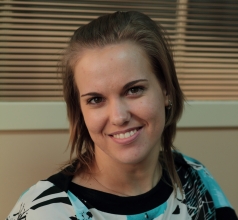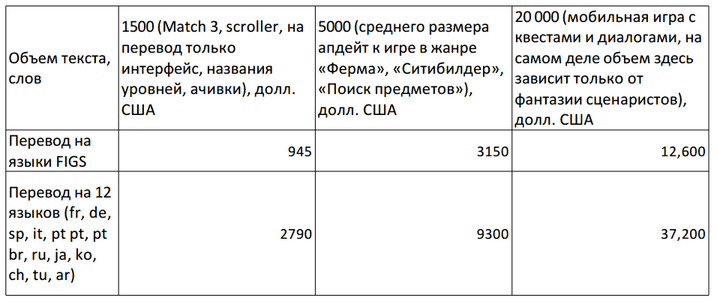Interview with All Correct Localization
How much the localization of the game costs, why it is needed, how the translation of the game takes place — about this and much more in our interview with All Correct Localization.
Natalia Novikova, Director of Localization Services at All Correct Localization, answered the questions.
Natalia Novikova
Hi! To begin with, please tell us about yourself, about what brought you to the gaming industry, and about All Correct Localization — what do you do and why?
Hi! My name is Natalia. I have been working for the company since 2010, I started working on game projects in 2011. Now I head the localization department. Before I joined All Correct, my gaming experience was limited to the Bomber game I played as a child and rare gaming sessions on friends’ consoles. So I was first “dragged” into the translation business, and only then into the gaming community.
As far as we know, All Correct Localization started with the translation of “big” games. And how long have you been working with mobile phones?
We started translating MMORPGs from Chinese and Korean in 2008. The first experience with mobile games came in 2011 — we started translating games in the genre of “hidden object” for the iOS platform.
Listen, why translate games on the mobile market at all? For example, Clash of Clans has not yet been translated into Russian, but this does not prevent the creators of the game from making big money on the Russian market.
Mobile and social games of the most popular genres (farms, bodybuilding, hidden object) would be almost impossible to distinguish from each other if not for the history. In any case, the game mechanics will be clear to the player, so it is likely that the game will bring a certain amount of profit, but if you really want players to get into your story, love the characters, highlight the game from a huge number of similar ones, then you need to think about its localization. Even such successful and famous games as Bastion (Warner Bros.) localization would add fans: I have repeatedly heard reviews that “I would like to understand what the narrator is talking about there.”
Clash of Clans is still not translated in Russia
Naturally, if we are talking about runner, Match 3 and other games where the task of the developer was not to create an interesting story and lead-ins for tasks, then you can limit yourself to localization of the interface or do without it at all.
In principle, Max Donskikh from Game Insight spoke about the importance of localization better than us at one of the gaming conferences — 4 percent of localized games bring 70 percent of the money. Yulia Lebedeva from Nevosoft also spoke about the importance of translating games into Russian and why it is necessary at the GDC Europe conference in 2013.
Do you think there are any fundamental differences between working on PC games and mobile games?
Click vs Tap. In fact, there are not many differences in the translation process. Some mobile games “catch up” with computer games in terms of the size of the lockit. Plus, translating games for the PC platform is easier to play at the start of the project: the developer usually does not mind providing a build, and you do not need to think about which device you need to run it on. To test mobile games, we had to buy an iPad and an iPod, for example.
What is more profitable for you to translate (where they pay more)?
We love it when a customer asks for a localization package for all the languages they are interested in. In fact, they pay about the same everywhere, foreign companies pay a little more than Russian ones. Ukrainian and Belarusian pay less than Russians. We get paid more for games that have a lot of text — the platform has nothing to do with this, the genre has only an indirect one (it so happened that Match 3 is rarely done with long plot texts).
Below is a table with very approximate prices for the translation of games.
You localize projects for a large number of mobile companies. Do you notice any trends at the moment? What types of projects (for example, fantasy time managers or gothic hiddens) and which languages are most often asked to localize?
I will hardly surprise you by saying that most often we are ordered to localize farms, bodybuilders and hidden object games. Although there are also more original projects — for example, scrollers with a variety of plots. Of the languages, FIGS, Asian languages, both variants of Portuguese are in stable demand. Turkish and Arabic are gaining popularity. Some companies are trying to enter exotic markets with their games: Vietnam, Malaysia, Indonesia.
How does the process of translating mobile projects usually work? Do they send you only text or are they allowed to play?
I will try to briefly describe our process: the customer provides a lockit and, if possible, a build, we agree on the completion date and the basic requirements of the customer for the translation. Usually we get a build at the beta stage or a later stage. Transferring a build with a lot of functional bugs or with show stops doesn’t make much sense: the translator is unlikely to figure out what to do with it. Since the localization decision is often made after the game has been released in the original, the provision of a build rarely causes technical problems for developers.
Redrawing the menu may not be necessary if the game is adapted to the hieroglyphics in advance. Asian texts, as a rule, are very compact compared to the Latin alphabet (the number of characters may be several times less, but hieroglyphs take up more space in height).
All game texts should be included in the lockit (therefore, developers need to avoid situations when the text is sewn into the game code or graphics and it is impossible to get it without a number of painful manipulations). A good lockit is always structured. Ideally, it should be clear where the text from the interface is, where the dialogues are, where the quests are, what exactly each line refers to.
After that, the actual work with the text begins: file preprocessing, translation, editing, verification.
Wait, what is file processing?
Processing a file is uploading it to a specialized translation program (MemoQ in our case). In this case, the load-bearing text is separated from tags and other service text that needs to be saved unchanged. Then segmentation is set up (how the text will be divided into separate fragments for translation). We also highlight repetitions in the text (completely identical segments, only one of which requires translation), thereby reducing the amount of work. When all these stages are completed, the work with lockit can be considered finished: the text is ready for delivery to the customer. After integrating the text into the game, localization testing is possible.
It is clear that the time spent on translation depends on the volume of the text, but what terms can you usually count on?
1500 words per day can be translated by one translator, the editor processes about 5000 words per day. In our usual practice, we ask for a week to translate ten thousand words.
Is there any basic mistake that developers always make when working with localizers?
It happens that this is the customer’s first experience with localization, then an infinite number of problems may arise: lockit in an inconvenient format, inappropriate planning of the localization deadline (“translate ten thousand words to us by the day after tomorrow”), lack of opportunity or unwillingness to provide translators with materials on the game.
And the last question: can All Correct Localization carry out a full localization cycle? That is, “turnkey”? So that the output has the same fonts as in the original, full account of the specifics of the market? And if so, how often are you asked for such a translation? And how much more expensive is it in percentage terms than usual?
Of course! Although such projects (with a full cycle) are relatively rare for us. The stage of text analysis and adaptation to the specifics of the market is more or less present on all projects. We can also make a request to adapt fonts and graphic material, but usually game studios have their own resources to perform such tasks.
The problem is that the font chosen by the customer to display the text in the game may not support a number of languages (support for Cyrillic, hieroglyphics, and various types of ligature is especially relevant). Therefore, of course, it is better to either draw a new one or contact specialists. However, we also have difficulties with this. We had a case when we were selecting a font for the Arabic language and only by the 10th modification were we able to ensure that all the connections between the characters were displayed as needed – in all previous cases it was impossible to understand the meaning of what was written.
The situation is more complicated with testing: some customers prefer to conduct testing on their own, some underestimate the importance of this stage and simply omit it. I don’t have exact data on the ratio of the cost of additional work and the actual translation, but I think that testing is about twenty percent of the cost of the entire localization.
Thanks for the interview!




